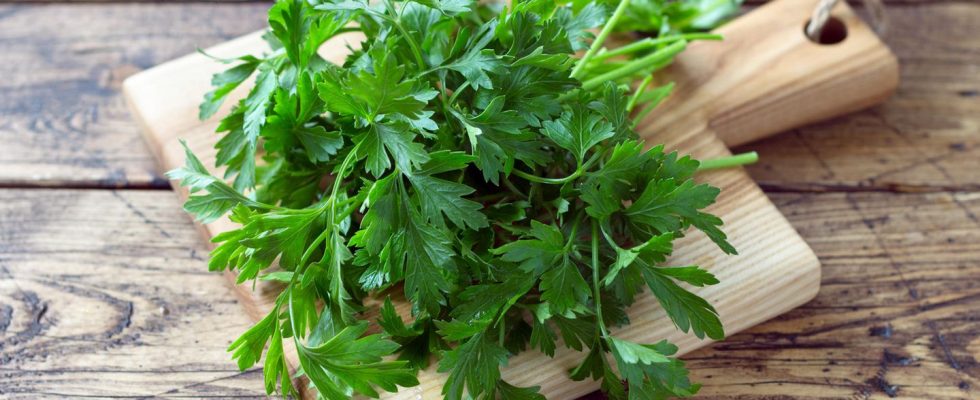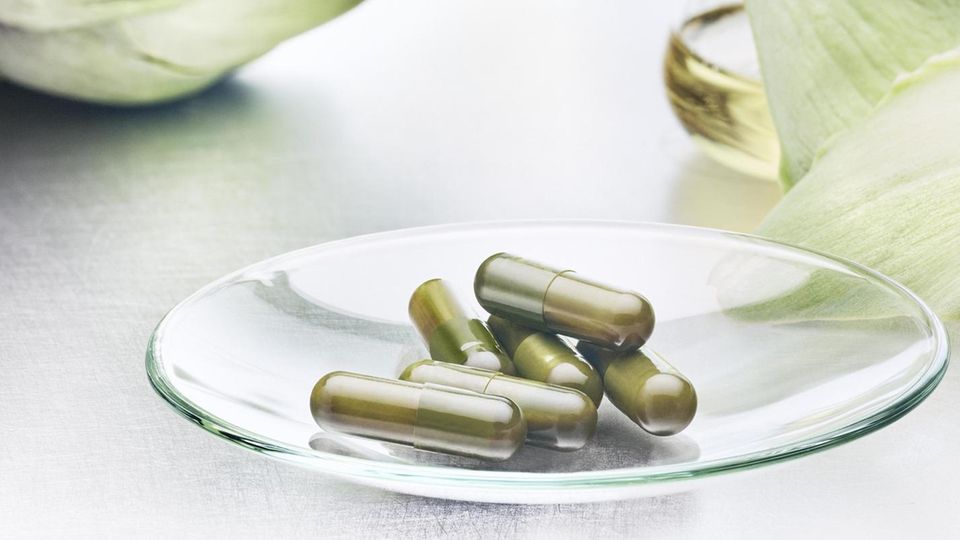Cook
Healthy culinary herb: What makes parsley so special
Popular kitchen all-rounder: Parsley is valued for its taste and ingredients
© Olga Lepeshkina / Getty Images
Parsley tastes good and is very healthy. Our author explains why parsley is also used in natural science to treat anemia.
You can still see them in old cookbooks, the photos of cold plates with sandwiches, Mettigeln or filled eggs with a bouquet on them parsley lies. Nowadays, however, this common decoration of curly parsley can hardly be found anymore – unfortunately: parsley is a healthy and affordable culinary herb that can also be found fresh, frozen or dried in every supermarket.
When it comes to ingredients, parsley is a real all-rounder with numerous vitamins and minerals. However, we would like to take a closer look at some selected ingredients that, when combined, are particularly interesting when it comes to preventing or combating anemia. Anemia, medically known as anemia, is caused by a lack of red blood cells (erythrocytes) or by a lack of the red blood pigment hemoglobin contained in the “erys”. Hemoglobin binds oxygen and transports it throughout the body via the bloodstream. There the oxygen – essential for the metabolism of the cells – is released again. The exhaustion typical of anemia is probably also caused by the lack of oxygen, which in turn is caused by a lack of hemoglobin. A side detail: If oxygen is bound to the iron-containing hemoglobin, a chemical reaction takes place between the iron and the oxygen and the blood turns bright red. When oxygen is released into the body, the blood turns dark red.
Parsley and blood formation
So what does parsley have to do with it? Like all green herbs and vegetables, parsley contains the green leaf pigment chlorophyll. As a molecule, chlorophyll has a structure that is strikingly similar to that of hemoglobin. It consists almost entirely of the same components. The only difference: in the middle of the hemoglobin molecule there is the iron atom already described, in the middle of the chlorophyll molecule there is a magnesium atom. This means: Chlorophyll – and therefore green herbs, green vegetables, green smoothies – provides a large proportion of the components required for the formation of hemoglobin. What’s still missing is iron. Here too, parsley doesn’t do too badly at 3.6 milligrams per 100 grams, especially because it also has a particularly high proportion of vitamin C, which improves the absorption of iron.
If parsley is consumed and then, ideally, combined with foods that are particularly rich in iron – red meat, lentils, chickpeas, pumpkin seeds, amaranth, quinoa and millet – the body has everything it needs for blood formation. A good reason to integrate green herbs and leafy greens more into the kitchen again – and one of the arguments for the “Go green” movement trend and the popularity of green smoothies. It should be noted, however, that the body can absorb iron from animal sources better than iron from plants.
As beneficial as the combination of chlorophyll, vitamin C and iron is with regard to iron deficiency and oxygen supply – the herb of parsley (the above-ground parts) should be enjoyed regularly, but not in too “high doses”. The essential oil of parsley contains the active ingredient apiol, which not only has a diuretic effect, but in high doses also stimulates labor. In fact, the parsley seeds, in which the concentration of apiol is higher than in the leaves, have been used in folk medicine as an abortifacient. Pregnant women should therefore generally consume parsley with caution.
Parsley is not a miracle cure for anemia; the symptoms often have to be treated with iron supplements. Nevertheless, it can support blood formation a little, strengthen vitality and deserves to be rediscovered for the kitchen. Here are two recipes that combine parsley and lemon in different variations:



